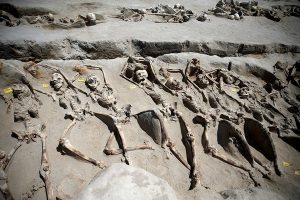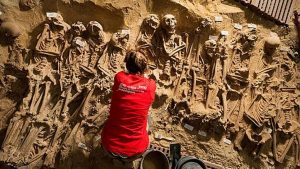One of my favorite Pearseus characters is Teo Altman; the power-hungry despot who lies and kills his way to the top. As most of my characters, he is based on a real-life person from ancient Greek history. Cylon of Athens is associated with the first reliably dated event in Athenian history: the Cylonian Affair, an ill-fated, week-long seizure of power in the city.
Cylon, one of the Athenian nobles and a previous victor of the Olympic Games, attempted a coup in 632 BCE with support from Megara, where his father-in-law, Theagenes, was tyrant. However, the commoners revolted and opposed the coup. Cylon and his supporters took refuge in Athena’s temple on the Acropolis (the later Parthenon). Cylon and his brother escaped, but his followers were cornered by Athens’ nine archons, who persuaded them to leave and stand trial after assuring them that their lives would be spared.
In an effort to ensure their safety, the accused tied a rope to the temple’s statue and went to the trial. On the way, the rope broke of its own accord. The Athenian archons, led by Megacles, took this as the goddess’s repudiation of her suppliants and had Cylon’s followers killed.
The city was in outrage: first the coup, then Megacles violated Athena’s temple by killing her suppliants. Megacles and his genos (tribe) stood trial, which lasted for a year. The verdict was unanimous: the Alcmaeonidae were exiled from the city for violating the laws against killing suppliants. Furthermore, the Alcmaeonidae were cursed with a miasma (“stain” or “pollution”), which was inherited by later generations, even after the Alcmaeonidae genos returned and took control of Athens.
Indeed, such was the Athenians’ rage against the Alcmaeonidae, that any family member who had died in the year that the trial against them lasted, was exhumed, and their bones carried outside the city.
A chilling discovery

Source: RT_com
Earlier this year, two mass graves containing 80 bodies were found in Palaio Faliro, a suburb of Athens. Archaeologists discovered the carefully buried remains in a massive ancient necropolis in Athens. Each had their hands shackled in iron, the apparent victims of a mass execution. The skeletons date from the second quarter of the seventh century BCE, and it is believed that they were the supporters of Cylon killed in the aftermath of his attempted coup.
Stella Chryssoulaki, who is leading the excavations, explained that the victims likely ranked higher than a commoner or slave:
They are all tied at the hands with handcuffs and most of them are very, very young and in a very good state of health when they were executed.

Source: Daily Hellas
A reviewer has said that Pearseus doesn’t pull any punches. In fact, I’m starting to feel that it’s positively meek, compared to real life!






Wow. Fascinating and gruesome. I agree, sometimes real life is/was far more brutal than what we are willing to write. And they were real people (children from the sounds of it).
Indeed! Not that different from what’s going on in Turkey right now, of course…
(Weird that the comment wouldn’t go through before. Let’s try again.)
I was wondering if there was a connection between Cylon and the Cylons from Battlestar Galactica. Sounds like it is only a coincidence, but you never know with fantasy and sci-fi. Also, I wrote stuff about how history can be brutal.
Damn, I wanted to add a Galactica Cylon with the caption, “no, no that kind of Cylon” – and forgot it!
An interesting historical connection to your book, Nicholas.
And ‘Miasma’ is one of my favourite words! (Usually associated with the Black Death here)
Best wishes, Pete.
It’s a great word, and I’ve seen it used in a number of contexts. It originally signified foul air, but was also used to describe a sin (that, presumably, followed around the sinner like foul air).